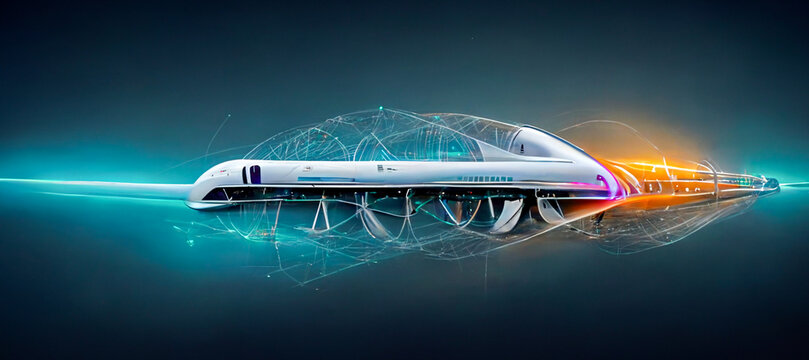Imagine commuting between cities at speeds exceeding 700 miles per hour—faster than most commercial airplanes. This vision of ultra-fast travel is closer to reality with Hyperloop technology. In this blog, we explore how Hyperloop works, its potential applications, benefits, challenges, and the future implications of this groundbreaking transportation innovation.
At its core, Hyperloop is a proposed mode of transportation that propels pods through a network of low-pressure tubes at near-supersonic speeds using magnetic levitation and vacuum technology. Conceived by Elon Musk in 2013, Hyperloop aims to revolutionize long-distance travel by significantly reducing travel times and carbon emissions compared to traditional modes of transportation.
The operational principle of Hyperloop involves pods traveling through tubes maintained at near-vacuum conditions to minimize air resistance. Magnetic levitation (maglev) technology suspends the pods above the track, eliminating friction and allowing for smooth, high-speed travel. Linear induction motors propel the pods forward, with potential speeds reaching up to 760 miles per hour (1,220 kilometers per hour).
Hyperloop technology promises a multitude of applications across various sectors:
In Passenger Transportation: Hyperloop could drastically reduce travel times between cities, transforming regional and intercity commuting. For example, a journey that currently takes hours by car or train could be completed in minutes via Hyperloop, offering unprecedented convenience and efficiency.
For Cargo Logistics: Hyperloop offers potential applications in freight transportation, enabling rapid delivery of goods over long distances. By optimizing supply chain logistics and reducing transit times, Hyperloop could revolutionize global trade and commerce, supporting just-in-time manufacturing and distribution networks.
In Urban Mobility: Hyperloop could alleviate congestion in densely populated cities by offering high-speed transportation corridors above or below ground. Integrated with existing transit systems, Hyperloop could provide seamless connectivity between urban centers and suburban areas, enhancing mobility and accessibility for residents.
The benefits of Hyperloop technology extend beyond speed and efficiency:
- Environmental Sustainability: Hyperloop operates on renewable energy sources such as solar power, minimizing carbon emissions compared to traditional transportation modes. By reducing reliance on fossil fuels and promoting energy efficiency, Hyperloop supports global efforts to combat climate change.
- Safety and Reliability: With autonomous operation and advanced safety features, Hyperloop promises a high level of reliability and passenger safety. Continuous monitoring systems and redundant fail-safe mechanisms ensure smooth operations and mitigate potential risks.
Challenges and considerations in implementing Hyperloop technology include:
- Infrastructure Development: Constructing Hyperloop infrastructure requires significant investment in land acquisition, tube manufacturing, and pod development. Overcoming regulatory hurdles and securing funding for large-scale projects are critical steps in realizing Hyperloop networks.
- Technological Feasibility: Testing and validating Hyperloop technology under real-world conditions, including maintaining vacuum integrity, ensuring pod stability, and managing operational logistics, are ongoing challenges for developers and engineers.
Looking ahead, the future of Hyperloop technology holds immense promise for global transportation networks. As research and development continue to advance, partnerships between governments, private sector stakeholders, and research institutions will be essential in scaling up Hyperloop projects worldwide.
From Our Editorial Team
Our Editorial team comprises of over 15 highly motivated bunch of individuals, who work tirelessly to get the most sought after curated content for our subscribers.


